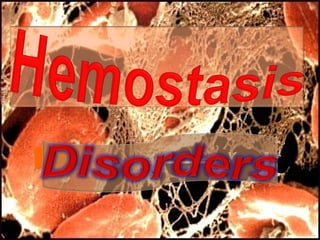Hemostasis is the process of blood clotting and subsequent clot dissolution following tissue injury repair. It involves vascular constriction, platelet activation and aggregation to form a temporary platelet plug, and fibrin formation to stabilize the plug. The clot must later dissolve for blood flow to resume. Tests used to evaluate hemostasis include platelet count, bleeding time, prothrombin time, activated partial thromboplastin time, and factor assays. Disorders of hemostasis can cause bleeding, and are investigated and managed based on underlying pathology.

















































